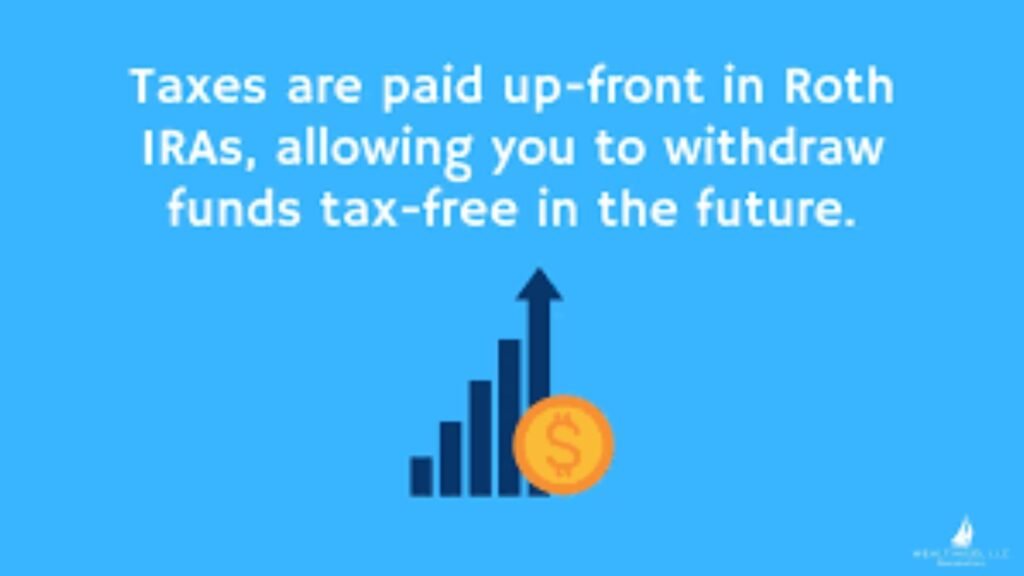
Introduction: The Power of Dual Retirement Strategies
Retirement planning often revolves around balancing guaranteed income sources, like pensions, with flexible, growth-oriented accounts such as Roth IRAs. While pensions provide stable payouts, they lack the tax advantages and adaptability of Roth IRAs. This article explores how combining a pension with a Roth IRA creates a robust retirement strategy, offering tax diversification, withdrawal flexibility, and legacy benefits—all while incorporating low-competition keywords like Roth IRA pension synergy and retirement income layering to enhance SEO value.
Understanding Pensions and Roth IRAs: Core Features
1. Pensions: The Foundation of Guaranteed Income
Pensions (defined-benefit plans) provide retirees with predictable, lifetime income based on years of service and salary history. However, they come with limitations:
- Taxable Income: Pension distributions are taxed as ordinary income, which can push retirees into higher tax brackets .
- Inflation Risk: Many pensions lack cost-of-living adjustments, reducing purchasing power over time.
- Limited Control: Retirees cannot adjust contribution amounts or investment choices.
2. Roth IRA: Tax-Free Growth and Flexibility
A Roth IRA is funded with after-tax dollars, allowing investments to grow tax-free. Key benefits include:
- Tax-Free Withdrawals: Qualified withdrawals (after age 59½ and a 5-year holding period) are exempt from federal taxes .
- No Required Minimum Distributions (RMDs): Unlike pensions and traditional IRAs, Roth IRAs let funds grow indefinitely, preserving wealth for heirs .
- Contribution Flexibility: Even retirees with earned income (e.g., part-time work) can contribute, provided they meet IRS income limits .
How a Roth IRA Enhances Pension Benefits
1. Tax Diversification: Balancing Taxable and Tax-Free Income
Pensions often anchor retirees in higher tax brackets due to their taxable nature. A Roth IRA offsets this by providing tax-free income, which can:
- Reduce Effective Tax Rates: Withdraw from Roth accounts during high-income years to avoid bracket creep.
- Optimize Social Security Taxation: Lower taxable income via Roth withdrawals may reduce the portion of Social Security benefits subject to taxes .
Example: A retiree with a $60,000 pension could withdraw $20,000 from a Roth IRA instead of a traditional IRA, potentially saving $4,400 annually (assuming a 22% tax rate) .
2. Mitigating Sequence-of-Returns Risk
Market downturns early in retirement can deplete savings. Roth IRAs offer flexibility to:
- Avoid Forced Sales: Skip withdrawals during market slumps, allowing investments to recover.
- Preserve Pension Stability: Use Roth funds for unexpected expenses without tapping into pension-backed cash flow.
3. Legacy and Estate Planning
Roth IRAs excel in wealth transfer:
- Tax-Free Inheritance: Heirs inherit Roth IRAs tax-free, unlike pensions, which may cease upon death or trigger taxes for beneficiaries .
- Stretch Provisions: Non-spouse beneficiaries can take distributions over their lifetimes, extending tax-free growth .

Strategic Integration: Steps to Pair a Roth IRA with Your Pension
1. Maximize Contributions During Peak Earning Years
- 2025 Limits: Contribute up to $7,000 annually ($8,000 if 50+) to a Roth IRA, provided your modified adjusted gross income (MAGI) falls below phase-out thresholds .
- Backdoor Roth IRA: High earners exceeding income limits can contribute to a traditional IRA and convert it to a Roth, paying taxes on gains but securing tax-free growth .
2. Coordinate Withdrawals for Tax Efficiency
- Pension “Fill the Bracket” Strategy: Use pension income to fill lower tax brackets (e.g., 12% or 22%), then supplement with Roth withdrawals to avoid higher rates.
- Roth Conversions in Low-Income Years: Convert traditional IRA funds to Roth during early retirement (pre-pension or part-time work years) to lock in lower tax rates .
3. Leverage the Mega Backdoor Roth for High Earners
Employees with 401(k) plans can make after-tax contributions (up to $77,500 in 2025 for those 50+) and convert them to a Roth IRA, bypassing income limits . This strategy is ideal for pension-eligible employees seeking additional tax-free growth.
Case Study: A Dual-Income Household’s Retirement Blueprint
Scenario: A married couple (ages 55 and 58) has a $75,000 pension and $500,000 in traditional IRAs.
Strategy:
- Roth Conversions: Convert $50,000 annually from traditional IRAs to Roth IRAs before RMDs begin at age 75, paying taxes at 22% instead of higher future rates.
- Tax Diversification: Withdraw $30,000 annually from the Roth IRA post-retirement, keeping taxable income below the 24% bracket.
- Legacy Planning: Designate children as Roth IRA beneficiaries, ensuring tax-free inheritance.
Outcome: By age 75, the couple reduces RMDs by 40% and preserves $200,000 in tax-free assets for heirs.

Overcoming Common Challenges
1. Pro-Rata Rule for Backdoor Roth Conversions
If you have pre-tax IRA funds, the IRS taxes conversions proportionally. To avoid this, roll pre-tax IRAs into a 401(k) before executing a backdoor Roth .
2. Timing Roth Withdrawals
Adhere to the 5-year rule for each conversion to avoid penalties. Withdraw contributions (not earnings) first if accessing funds early .
3. Managing Pension Taxation
Pair Roth withdrawals with charitable contributions or Qualified Charitable Distributions (QCDs) from IRAs to further reduce taxable income .
Conclusion: Building a Resilient Retirement Mosaic
A pension provides stability, but a Roth IRA adds agility. By integrating these tools, retirees achieve tax diversification, withdrawal flexibility, and generational wealth preservation. Whether through strategic conversions, maximizing contributions, or smart withdrawal sequencing, the synergy between a Roth IRA and pension ensures a retirement plan that’s as dynamic as it is secure.


